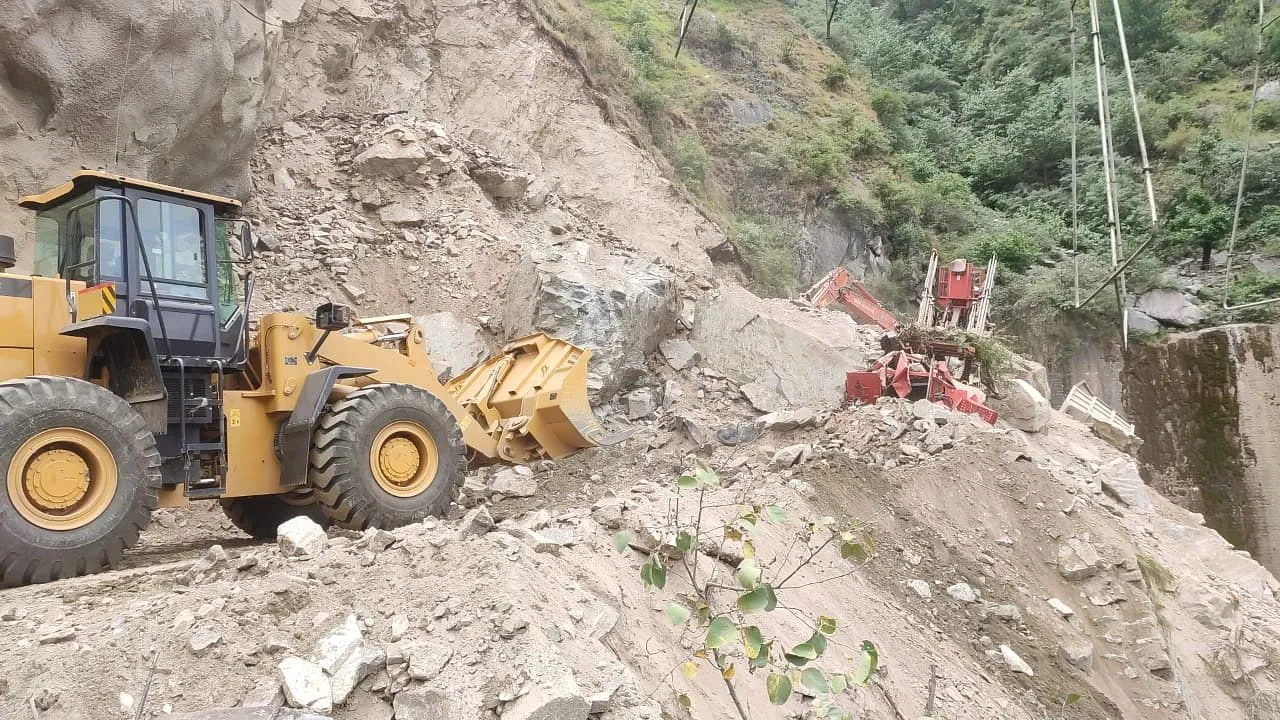Jammu, May 28: Assistant Professor in Geology Department of the University of Jammu Dr Yudhbir Singh has held the “unplanned and unscientific excavation responsible for tunnel collapse in Khooni Nallah.”
He is an expert in engineering geology and was part of a team which had taken-up field survey along with six other experts who had suggested measures on how to deal with the repeated landslides and shooting stones on Srinagar Jammu National Highway in Udhampur and its adjoining areas.
“It appears that unplanned and unscientific excavation of the tunnel has resulted in the collapse of portal part of the tunnel,” Dr Singh told Greater Kashmir, while referring to the recent tunnel collapse in which 10 people lost their lives,
“Unfortunately, subletting of the excavation work to the unqualified excavation companies which do not have the services of a professional geologist at disposal leads to such mishaps,” he observed.
He further said, “Whenever such works are executed, a proper layout plan is prepared and reviewed before executing it on the ground in the presence of a professional geologist.”
In this case, he said, “It appears that no scientific approach was adopted. It was done without pre-planning cutting procedures, blasting nature, etc.”
EX-DC UDHAMPUR HAD CONSTITUTED TEAM OF 7 EXPERTS
As landslides also occur in Udhampur and often become the cause of highway blockage, former Deputy Commissioner Udhampur Indu Kanwal Chib had constituted a team of seven experts considering the strategic importance of the national highway (NH-44) which often gets blocked due to landslides.
This committee’s recommendations have already been submitted to the government for taking up preventive measures suggested by the experts following their field visit, an official told Greater Kashmir.
The team comprised DFO Udhampur to Banihal Raj Kumar, Assistant Professor in Geology Department of University of Jammu Dr Yudhbir Singh, senior geologist (AE-NHAI) Deepak Gupta, DSCO Doda – Ramban Sagar Hussain, DSCO Udhampur Sanjay Kotwal, Project Manager GECPL Mohan Jena and research scholar from University of Jammu Rajesh Singh.
The team had visited the vulnerable places on the highway to find out specific cases, possible short term or immediate remedial measures to address the problems of frequent landslides in areas falling in Murree Group of the outer Himalayan tectonic zone.
After visiting the spot, the expert team had observed, “No drainage system was adopted while executing PMGSY road at the upper side of the slide mass. Highly fractured and jointed rock interbedded layers of sandwiched sandstone with mudstones or siltstone were posing great threat to the under construction road. Similarly, the HT tower at the site is also under threat.”
At the same time, they had reported to the then Deputy Commissioner Udhampur that “a number of exotic boulders varying in mass (500-17152.4 kg) are seen at the crown and middle portion of the slides and are posing a huge threat.”
They had pointed out about the road widening agency which used different methods for cutting the highly fractured rocks mass which included the use of heavy machinery for cutting and breaking for achieving the desired road alignment. On witnessing the ground situation, the team suggested immediate removal of exotic boulders, apprehending that they might trigger landslides.
Referring to the earth slide near Dharamthal village mainly consisting of terraced agricultural land on the slope, the experts had observed, “The cracks were traced uphill up to the crown of the potential slide and also traced in the house of Naseeb Singh. Percolation of water from rainfall and from nearby streams in the cracks on the slope has been a major factor for failure and the channel constructed for diversion of water is not as per standard norms.”
They had suggested stopping toe cutting for road widening purposes, blasting of any nature around slide areas, sealing of cracks, stitching or rock bolting of the hanging rocks to prevent the situation from becoming more vulnerable. They had also maintained that the disintegrated boulders present at the crown and all along the slopes could generate a maximum force during the fall and needed to be removed.






